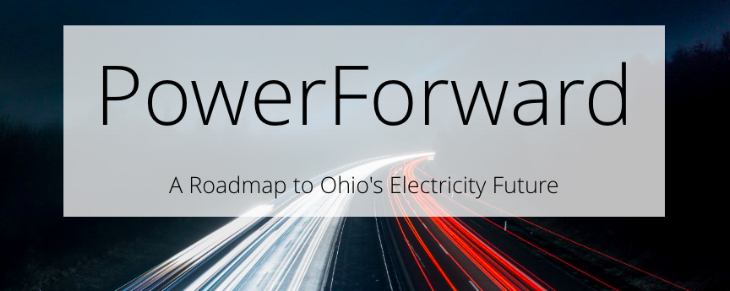
In August, the Public Utilities Commission of Ohio (PUCO) released a report on Ohio’s electricity future, the product of an initiative coined PowerForward. The PowerForward report is a milestone in the state’s effort to revolutionize Ohio’s electrical grid, improve reliability and resilience, and incorporate new, innovative technologies to enhance the customer experience. AEE and our member companies have been involved all along the way. The process is far from finished, but the PowerForward roadmap points in the right direction – toward a modernized electric power grid, with utilities regulated in ways that take advantage of advanced energy technologies and services.
As the energy landscape changes, states are preparing to integrate new, advanced technologies into their existing systems to take advantage of the benefits they can provide. At AEE, we have been advancing these conversations by bringing together public utility commissioners and staff, utility executives, and energy technology experts to discuss ways to prepare for the evolving electricity system, as well as by participating directly in state initiatives, such as Illinois’ Next Grid, Rhode Island’s PowerSector Transformation, and New York’s Reforming the Energy Vision proceeding.
PowerForward is Ohio’s ambitious contribution to this rethinking of the electric power system. Over the past year and a half, PUCO called upon 127 industry leaders to guide conversations on topics ranging from integrating DER into the evolving grid, to incorporating electric vehicles (EVs) and their infrastructure onto the electric system, to redesigning Ohio’s ratemaking and rate design structure to inspire investments in innovative energy resources. AEE has been a participant throughout this process, along with numerous member companies, including: Fluence, Greenlots, EnergyHub, CLEAResult, Oracle, Direct Energy, FirstFuel, Schneider Electric, GE, EnerNOC, Itron, Landis+Gyr, Smart Wires, and Honda.
The PowerForward initiative consisted of a series of workshops and informal discussions to start this dialogue and educate the Commission, staff, and industry participants. Specifically, the proces was broken down into three phases:
- Phase 1, held over three days in April 2017, was focused on the what a future grid would look like and helped to lay the foundation for the end-vision of the initiative;
- Phase 2, held over three days in July 2017, focused on emerging technologies, grid architecture, and the technical aspects of the grid;
- Phase 3 was spread out over two three-day sessions in March 2018 and focused on some of the more nuanced and technical policy considerations such as distribution system planning and grid level marketplaces, electric vehicle integration, the role of energy storage, unlocking the value of data access, utility business model reform, and rate design.
The culmination of these workshops was the staff roadmap and recommendations, intended to chart a path forward over the next couple of years. The PowerForward report (available on a slick website) did not make any final decisions; however, it did put the ball in the utilities’ court to submit proposals, while also establishing working groups to push the conversation forward. For its part, the Commission has opened several proceedings with next steps expected by the new year:
- A PowerForward Collaborative (led by staff), intended to monitor the electric vehicle (EV) marketplace; study potential impacts of increased EV penetration on its distribution system; identify where non-wires alternatives (NWAs), such as storage, would be beneficial to deploy; and establish a streamlined process to submit NWA proposals.
- Spin-off working groups (led by a facilitator chosen by staff) on distribution system planning and on data and the modern grid, to develop standardized access to customer energy usage data for third parties.
- A docket focused on cybersecurity (expected to be opened by January 1), to establish annual filing requirements for the state’s utilities.
The report calls on utilities to file grid architecture status reports and a distribution system planning assessment by April 1, 2019. The report also clarified utilities’ existing authority to apply for grid modernization investments within their status reports and pushed utilities to propose time-of-use rate designs, with marketing and customer education plans, for default service customers.
While not explicitly mentioned in next steps, the report also touches on potential changes to the utility business model, specifically expressing a desire to implement performance-based regulation (PBR) in grid modernization investment plans in order to contain costs and share risks between utilities and customers. The report also suggests that the Commission consider proposals that optimize incentives between capital investments (on which utilities can normally earn a rate of return) and service based solutions (normally treated as an operating expense that is passed through to customers without earning a return for the utility). Cost recovery frameworks that align the interests of utilities and customers have been a focus of AEE’s in our work across the country. (For more on this, see AEE’s 21st century electricity system issue briefs and white paper on optimizing incentives for capital- and service-based solutions and video comments from AEE’s Ryan Katofsky and from CLEAResult’s Doug Lewin here from Phase 3 of the initiative focused on business model reform.)
Through the work so far, PUCO has shown the value of bringing stakeholders to the table and establishing an end-vision for transforming Ohio’s electricity system that embraces innovation and seeks to enhance the customer electricity experience. While this transformation cannot be done overnight, Ohio is off to a great start. We look forward to participating in, and contributing to, the process moving forward.
AEE has published a set of seven issue briefs on key topics in utility regulation in a changing electric power system: advanced metering, access to data, optimizing capital and service expenditures, energy efficiency as a resource, performance-based regulation, rate design for a DER future, and distribution system planning.
